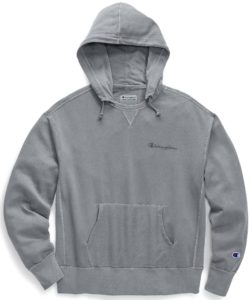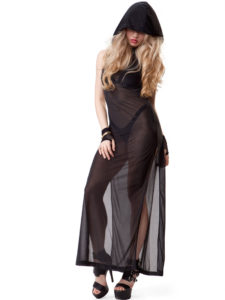Tales Of The Hood: The Epic Story Of Hoodie Fashion.
In the beginning…

Hooded apparel have been a documented part of men’s and women’s wear for centuries. The word ‘hood’ derives from the Anglo-Saxon word hōd ultimately of the same root as English hat. The garment’s style and form can be traced back to Medieval Europe when the normal clothing for monks included a hood called a cowl attached to a tunic or robes, and a chaperon or hooded cape was very commonly worn by any outdoors worker. Its appearance was known in England at least as early as the 12th century.

The Knickerbocker Knitting Company in 1919, claims to have made the first hooded sweatshirt. You may know them today as the Champion Athletic Apparel. Originally a sweater mill, Champion began making sweatshirts in the early 1930s once it developed methods to sew thicker underwear material, according to Harold Lipson, a former president at Champion who started at the company in 1934. “Simply sewn on, the hood was first added to sweatshirts in order to protect athletes and laborers from the elements.” Soon Champion was working directly with schools, eventually making big double-thickness hooded sweatshirts that football and track athletes wore on the sidelines in bad weather.
The dark ages…
Even as athletes started giving their sports wear to their girlfriends and made sportswear an emerging style, there was an element of moral panic emerging. Its popularity and stigmatization as the go to wear of criminals and misfits rose in proportion. Its stealth qualities emerged in urban hip-hop among “stick-up kids” and graffiti artists and in their suburban counterparts of skaters and BMX tricksters. Concurrently surfers and break-dancers embraced the warming qualities. Over time, hip-hop, punk, and skate cultures found common ground in the distaste that society had for them. They could all relate to being harassed by the cops and getting hard looks by adults. And so the hoodie was further interwoven with a culture of defiance. But as bad as that may seem, the youth culture did the work of tugging the hoodie from the sphere of sportswear, where clothing exists to enhance performance, into the world of street wear, where the clothing is performance.
Into the light…
The hoodie has indeed had a colorful history good and bad, including being banned for brief periods. On the one hand the hoodie symbolizes the ominous and sinister look of the “Unabomber” Ted Kaczynski to the euphoric symbol of indomitable spirit and perseverance of “Rocky”. Can the hoodie ever shake the negative stigmatism for itself and those who wear it? One can not forget the tragic story of Trayvon Martin who was described by George Zimmerman as a “suspicious guy, wearing a dark hoodie, a gray hoodie.” Geraldo Rivera said “the hoodie is as much responsible for Trayvon Martin’s death as George Zimmerman was. You cannot rehabilitate the hoodie,” Rivera said. “Stop wearing it.” But very soon thousands of people in America and around the world showed they did not agree. They marched wearing hoodies. They posted on social media wearing hoodies. Soon the hoodie which was designed to enclose and encompass emerged as the symbol of open dialogue and change.
From playing fields, to every conceivable subculture, to the runway; the hoodie is now enjoying the golden age of acceptance. Its worn by countless celebrities and name checked by Prime Ministers. “What began as a trend in the 1990 has developed into a global phenomenon because of its versatility and comfort,” says fashion designer Gordan Richardson former creative director of Topman. With the hoodie as a wardrobe staple, big brands are listening to their markets. With that in mind, Epic Hoodie Fashions hopes you will journey with us as we take a look at this unique fashion piece.



